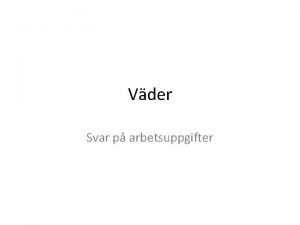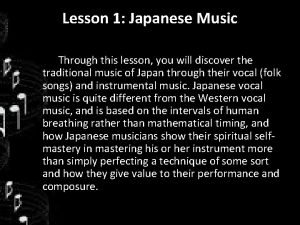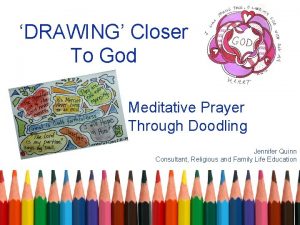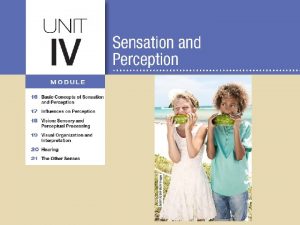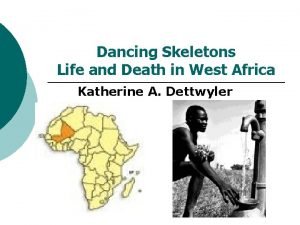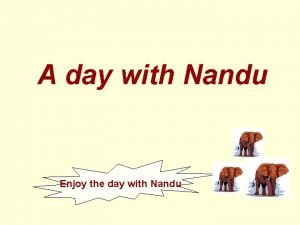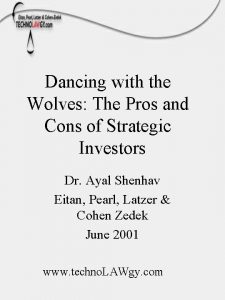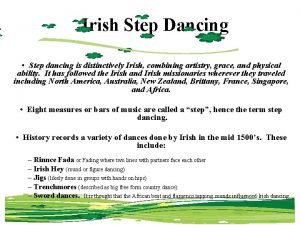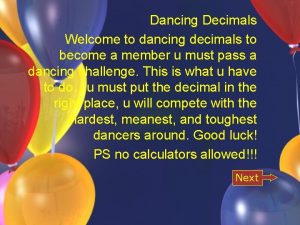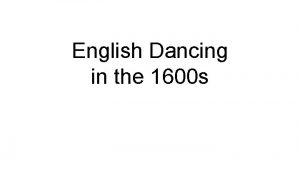Meditative Dancing and Flow Aska Sakuta 2 nd









- Slides: 9

Meditative Dancing and ‘Flow’ Aska Sakuta 2 nd year Ph. D Dance and Cognitive Science

Foreword: my practice I am a “Dance Scientist” Evidence-based research ↕ Philosophical accounts I am a “Dance Psychologist” & Ethnographer ‘Being in between’ as a practice

My inspirations Nihon-buyo (Tomie Hahn & Barbara Sellers-Young) Ø Repeating choreography – “no mind” Martial Arts (Barry Allen & Kevin Krein) Ø Physical training – “responsive state” Intention altered state mastery? ‘Flow’ state (Mihaly Csikszentmihalyi) Ø Concentration + effortlessness + performance

My Questions 1. 2. 3. 4. How do I extract and define the essence of this specific approach to movement? What is this particular altered mental state, often compared to ‘flow’? What are observable movement qualities, possibly caused by this mental state? Is there a way to measure these movement qualities objectively?

Meditative Dancing A. Quiet the mind, eliminate distractions B. Continuous focus on one internal aspect C. Release of analysis or judgement D. No rush or push to attain an external goal E. No forceful will to move one’s body (Definition of meditation – Roberto Cardoso & Kenneth Bond)

Meditative Flow Conditions: A. It is clear that the goal is to maintain a focused attention. B. Dancer is aware of his/her level of attention. C. Dancer’s ability to maintain focus is sufficient for the task. Subjective experience: D. Dancer has stable focused attention (it is effortless). E. Dancer feels: “Everything seems to naturally fall into place”. F. Dancer feels that movements happen “automatically”. G. Dancer is not concerned with others’ judgements. H. Dancer loses track of time. I. Dancer feels that the activity was truly fulfilling and rewarding. (Flow vs meditation – Delle Fave)

Experience it! Task 1: Think of a set of movements – 5 sec. Task 2: Repeat the sequence Task 3: Gradually “let go” of distractions Task 4: Keep focusing…

Neuroscience of ‘flow’ 1. Explicit / Egocentric System 2. Implicit / Allocentric System

References Allen, B. (2013). Games of sport, works of art, and the striking beauty of Asian martial arts. Journal of the Philosophy of Sport, 40(2), 241 -254. Austin, J. H. (2010). The thalamic gateway: how the meditative training of attention evolves toward selfless transformations of consciousness. Effortless Attention. A New Perspective in the Cognitive Science of Attention and Action, 373 -407. Bond, K. , Karkhaneh, M. , Tjosvold, L. , Vandermeer, B. , Liang, Y. , Bialy, L. , . . . & Klassen, T. P. (2007). Meditation practices for health: state of the research (p. 10). AHRQ. Brewer, J. A. , Worhunsky, P. D. , Gray, J. R. , Tang, Y. -Y. , Weber, J. , & Kober, H. (2011). Meditation experience is associated with differences in default mode network activity and connectivity. Proceedings of the National Academy of Sciences of the United States of America, 108(50). Cardoso, R. , de Souza, E. , Camano, L. , & Leite, J. R. (2004). Meditation in health: an operational definition. Brain Research Protocols, 14(1), 58 -60. Csikszentmihalyi, M. (1996). Flow and the psychology of discovery and invention. New Yprk: Harper Collins. De Kock, Frederick Gideon (2014) The neuropsychological measure (EEG) of flow under conditions of peak performance, University of South Africa, Pretoria. Delle Fave, A. , Massimini, F. , & Bassi, M. (2011). Optimal experience and meditation: western and asian approaches to well-being. In Psychological Selection and Optimal Experience Across Cultures (pp. 111126). Springer Netherlands. Hahn, T. (2007). Sensational knowledge: Embodying culture through Japanese dance. Wesleyan University Press. Kasai, T. (1999). A Butoh Dance Method for psychosomatic exploration. MEMOIRS-HOKKAIDO INSTITUTE OF TECHNOLOGY, 27, 309 -316. Krein, K. , & Ilundáin-Agurruza, J. (2014). An east–west comparative analysis of Mushin and flow. Philosophy and the martial arts, 139 -164. Nakamura, J. , & Csikszentmihalyi, M. (2014). The concept of flow. In Flow and the Foundations of Positive Psychology (pp. 239 -263). Springer Netherlands. Sellers-Young, B. (1993). Teaching personality with gracefulness: the transmission of Japanese cultural values through Japanese dance theatre.
 Säkraste platsen vid åska
Säkraste platsen vid åska Hur bildas dimma
Hur bildas dimma What music is basically meditative in character
What music is basically meditative in character Meditative doodling
Meditative doodling Praise him with tambourine and dancing
Praise him with tambourine and dancing Narmeen is viewing the board in the classroom
Narmeen is viewing the board in the classroom Dancing skeletons life and death in west africa
Dancing skeletons life and death in west africa Why did amma push nandu in water
Why did amma push nandu in water Dancing with
Dancing with Dfd to structure chart
Dfd to structure chart

